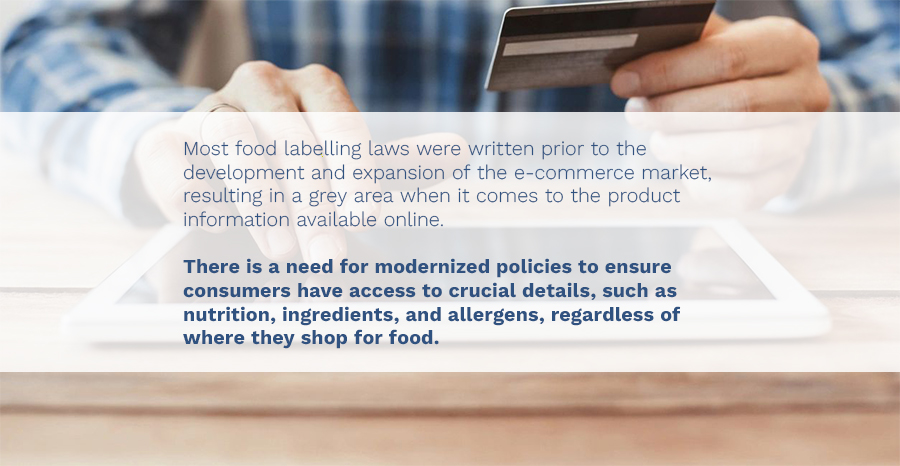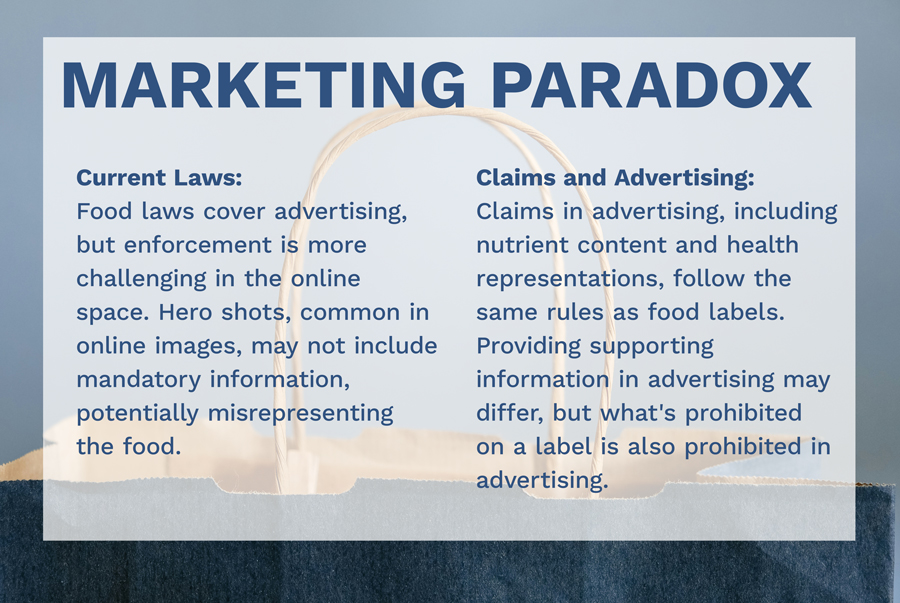The landscape of food purchasing has evolved with the rise of e-commerce, presenting challenges in providing essential information to online shoppers.
If you are planning to enter a new market through online sales only, there are still many compliance aspects to consider. When it comes to the requirements for your online “store”, both Health Canada and the Food and Drug Administration are somewhat behind the times.

The Canadian Food Inspection Agency (CFIA) and Health Canada are currently reviewing voluntary guidelines for food sold through e-commerce, addressing the challenges of online food labelling.
Taken from a CFIA summary of their 2022 consultation, consumers had many concerns with the way information is being presented online:
Consumers generally found it challenging and frustrating to find all the information they needed to inform their purchasing decision and the most cited information consumers wanted was allergen content (including precautionary statements), ingredients and nutrition facts. Country of origin was also mentioned but to a lesser extent.
Important Note: Regardless of what is displayed online, the physical product labels must be compliant with the requirements of the country where they are sold.
Food Labelling in E-commerce:
• Current Situation: Federal food labelling laws focus on prepackaged products in physical stores, and there are no mandatory rules for online vendors to provide similar information.
• Consumer Concerns: Without consistent online food labeling, consumers may lack essential information like ingredients, allergens, and nutrition, impacting informed purchasing decisions.
• Regulatory Challenges: Regulatory modernization for uniformity is necessary in the long run, but in the short term, comprehensive regulations may be challenging due to insufficient information. Immediate health concerns are mitigated as required information is on the packaged product.
• Consistency Concerns: Ensuring online information consistency with actual product labels is a major challenge. Small online retailers may face disadvantages, and the voluntary guidelines aim to provide a framework for accurate information sharing.

In summary, the ongoing efforts by governing bodies to develop guidelines aim to address challenges in online food labelling, ensuring consistency, reliability, and informed consumer choices in the evolving landscape of retail and e-commerce.





